The following HttpServer program easily handles 8000 requests/s without HTTP keepalive, but a measly 22 requests/s with keepalive.
import java.io.IOException;
import java.io.OutputStream;
import java.net.InetSocketAddress;
import com.sun.net.httpserver.HttpExchange;
import com.sun.net.httpserver.HttpHandler;
import com.sun.net.httpserver.HttpServer;
public class HSTest {
public static void main(String[] args) throws IOException {
HttpServer hs = HttpServer.create(new InetSocketAddress(30006), 1000);
hs.createContext("/", new HttpHandler() {
public void handle(HttpExchange he) throws IOException {
byte[] FILE = "xxxxx".getBytes();
he.sendResponseHeaders(200, FILE.length);
OutputStream os = he.getResponseBody();
os.write(FILE);
os.flush();
he.close();
}
});
hs.start();
}
}
Here's how it looks with keepalive:
Note the huge delays at packets 6, 12 and 17. After the first one, they're always just a little bit over 40ms. In contrast, without keepalive everything's fine:
That's 3 whole requests before the first ms is over!
I'm using OpenJDK 8 on debian sid Linux amd64, with both client and server on the same machine and communicating via a localhost interface. To test, I'm using ab -n 100000 -c 1 http://localhost:30006/ (no keepalive) and ab -n 100000 -c 1 -k http://localhost:30006/ (keepalive), as well as curl and chromium (both with keepalive by default).
So what is causing the 40ms delay with HTTP keepalive requests, and how do I make my server fast?

